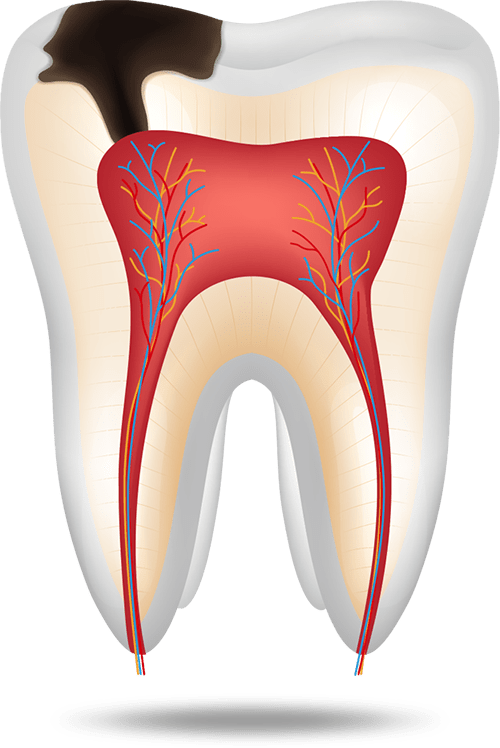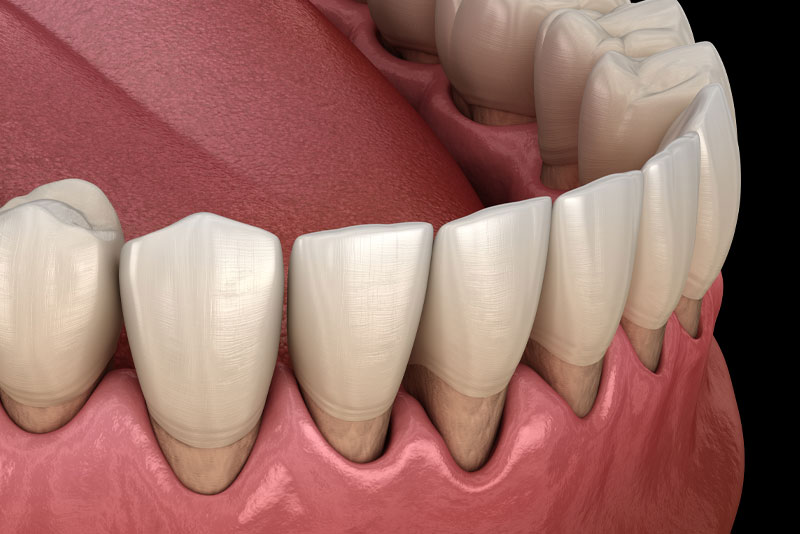Gum Grafting - Amelia Island Periodontics
Gum Grafting Corrects Gum Recession Caused By Periodontal Disease

Gum Grafting
Gum recession is one of the most noticeable results of periodontal disease (gum disease) and is the movement of the gum line down the root of a tooth. Recession can be limited to one tooth or many and symptoms vary from none at all to root sensitivity, inflammation of the tissues, root exposure, cavities, or esthetic concerns. It’s important to have gum recession repaired because gum tissue is the primary barrier to bacteria. Without adequate gum tissue around the teeth, bacteria can cause gum disease, bone and gum deterioration, and even tooth loss.
Gum Grafting Is Needed If:
- Root exposure on one or more teeth
- Root sensitivity
- Inflammation of the tissues
- Cavities

- Esthetic concerns
- Gum Disease
- Bone and Gum Deterioration
- Tooth Loss

- Connective tissue graft
Cosmetic Benefits
Those who feel that their teeth are too large or who are embarrassed by the amount of tooth showing can also benefit from gum grafting procedures. If gum disease or other reasons have caused significant loss of supporting structures, gum grafting can be used to return the gum line to a more attractive level. Doing so will reduce the amount of tooth that shows and improve the overall health of the teeth and gums.
Types of Gum Grafting Procedures
There are three types of gum grafting surgery. Which type your dentist uses will depend on each person’s unique situation and specific needs.
Connective tissue grafts are the most common form of gum grafts. During the procedure, the doctor will cut a flap of skin from the roof of your mouth and remove tissue from under the flap. The flap is then stitched back down. The excised tissue will then be stitched to the gum tissue surrounding the exposed root. Over time, the attached tissue will grow together with the existing gum tissue, forming a healthier gum line around the tooth. In addition to natural grafts from the patient, some doctors prefer to use graft material from a tissue bank or synthetic material.
Free gingival grafts are similar to a connective tissue graft except that instead of cutting a flap to remove tissue underneath, a small amount of tissue is taken directly from the roof of the mouth. This tissue is then placed and attached directly to the gum area being treated. Doctors prefer this method for those who have naturally thin gums.
The pedicle graft method does not take graft tissue from the roof of the mouth. Instead, the gum tissue is grafted from gum tissue around the tooth needing repair. In this method, the flap (called a pedicle) is partially cut away so that one edge remains attached. The flap is then pulled up (lower jaw) or down (upper jaw) to cover the exposed root and sewn in place. This method is preferred for patients who have plenty of gum tissue near the tooth needing repair.
In addition to natural grafts from the patient, some dentists prefer to use graft material from a tissue bank.
After the procedure you will be able to go home. However, if you were given a sedative to relax you will need a friend or family member to drive you. Be sure to follow all instructions your doctor gives you for post-operative care. Do not floss or brush the gum line that was treated until the area has healed. A special mouthwash will be given to you that will help control plaque during this time.
For about a week after the gum grafting procedure your diet will be limited to soft foods such as eggs, pasta, Jell-O, and yogurt. Pain varies from patient to patient and depends on many variables including pain tolerance and the type of gum graft performed. Your doctor will likely recommend an over-the-counter anti-inflammatory medication or, in rare cases, a prescription pain medication. Many patients are able to return to work within a day or two.


